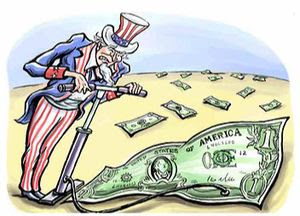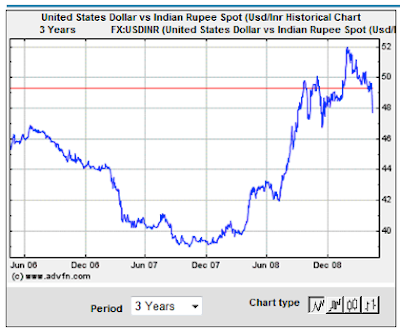 Ben Bernanke’s assurance on continuing “Easy Monetary Policy” resulted in strengthening of major global currencies including Indian Rupee against US Dollar. Positive US home-sales data added to the hopes that US recession will have a quicker end.
Ben Bernanke’s assurance on continuing “Easy Monetary Policy” resulted in strengthening of major global currencies including Indian Rupee against US Dollar. Positive US home-sales data added to the hopes that US recession will have a quicker end.At the same time, as the UK and European economic data was not quite convincing, GBP and Euro gave up part of their gains. JPY lost against USD after the improvement in global sentiments increased the risk appetite of the investors who moved their money to riskier assets.
Indian Rupee rallied up to 48.20 levels thanks to the global trends and positive equity markets but lost its momentum once the Importers rushed to cover their position by buying US Dollars.
Better than expected Six-Core-Industries growth (India) had a positive impact on the market and Rupee closed with its biggest weekly gain in last two months.
Gold prices went up during the last week on as an alternative investment avenue because of fall in dollar. Crude also strengthened on easy dollar policy, positive equity sentiments and fresh hopes on a quicker end to the recession
Coming week, USD-INR market will be keenly looking at the quarterly monetary policy to be announced by RBI. FII inflows will have a positive impact on Rupee. Markets will also be looking at the US data like home-sales, jobless claims and consumer confidence.
As per Technical Analysis, Rupee may be moving within a range between 48 and 49 during the week.
In case global equity markets are not doing well, there is a good chance of gold picking up and rallying to new highs. Crude oil may face strong resistance around $70 levels.
Wishing a happy week ahead



